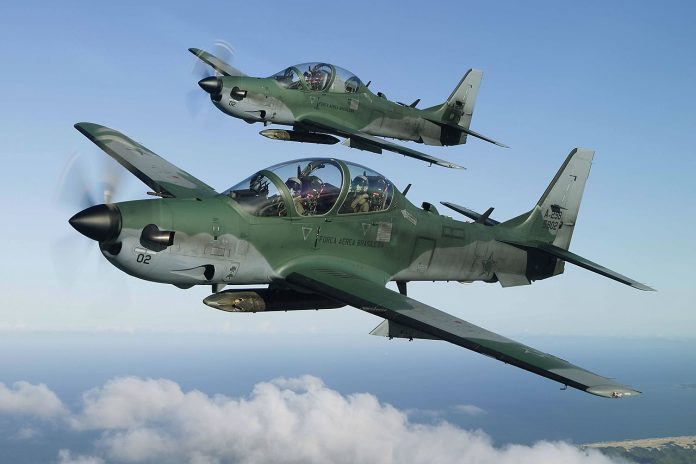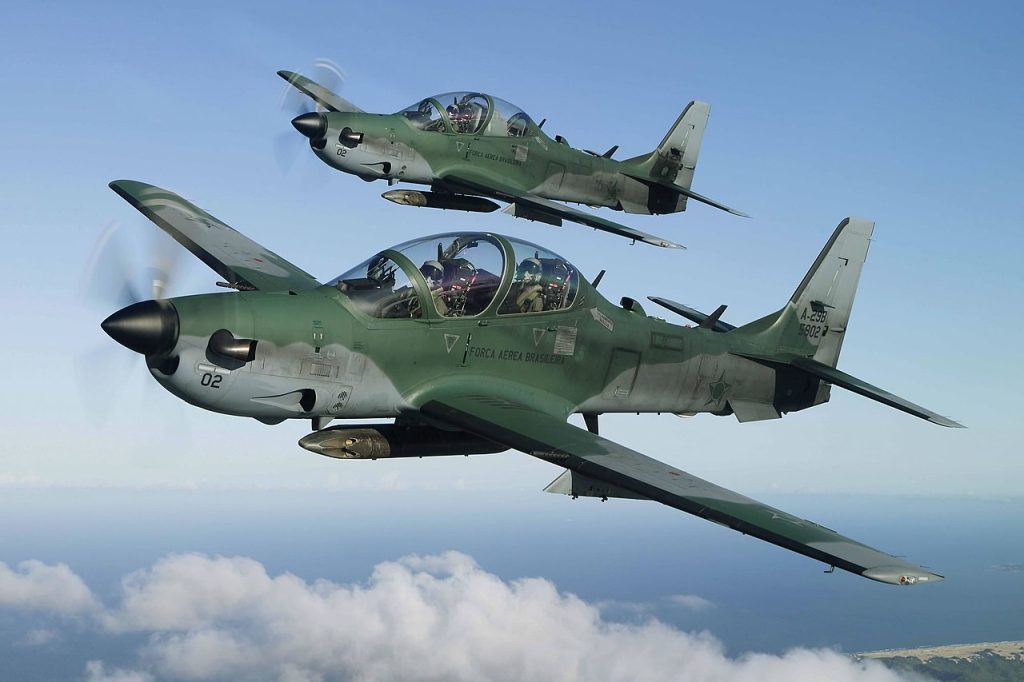
“The problem with an air-to-ground weapon is it doesn’t have – it has to hit it directly,” Air Force Lt. Gen. Derek France warned earlier this year, underscoring the urgency for smarter, cheaper ways to counter drones. That urgency is driving a surprise shift: turboprop light attack aircraft, once seen as niche tools for counterinsurgency, are being pitched as front-line drone interceptors. At the center of this evolution is the Embraer A-29 Super Tucano, long a staple of training and light attack missions around the world. The Brazilian manufacturer has now revealed a counter-unmanned aerial system, or C-UAS, concept that leverages sensors, datalinks, and precision-guided rockets already fielded to give the A-29 a new mission set in hunting drones.
This is more than just marketing; it reflects a larger trend in military aviation toward cost-effective, layered defenses against proliferating aerial threats. From Ukraine’s improvised crop-duster interceptors to the U.S. fighters carrying laser-guided rockets, operational lessons have been clear: speed, agility and magazine depth matter at least as much as raw performance. Here are nine key aspects of how the Super Tucano is being reimagined for the drone age.

1. Utilize all Sensors and Weapons.
Embraer’s A-29 counter-drone concept leverages systems already integrated onto the plane: identification, tracking, and laser designation from EO/IR sensor turrets, plus dedicated datalinks feeding target coordinates directly to the crew. The combinations of wing-mounted .50-caliber machine guns and laser-guided rockets on under-wing pylons create options for the pilots in either precision or visually guided engagements. This has the advantage of not requiring expensive structural changes or avionics overhauls-a positive factor for current operators. “The A-29 is the ideal tool to counter UAS effectively and at low cost,” said João Bosco Costa Junior, CEO of Embraer Defense & Security, thereby adding another layer to its already extensive mission set.

2. APKWS II Rockets as the Core Interceptor
At the heart of the A-29 drone-hunting mission are laser-guided 70mm APKWS II rockets. Those designed for air-to-ground use have since been adapted into air-to-air optimized variants, such as the AGR-20F FALCO fitted with proximity fuzes and improved guidance algorithms. The cost advantage is stark: a complete APKWS II round costs in the low tens of thousands of dollars compared to $450,000 for an AIM-9X and around $1 million for an AIM-120 AMRAAM. Seven-shot pods multiply magazine depth, allowing for multiple engagements per sortie without exhausting high-value missile stocks.
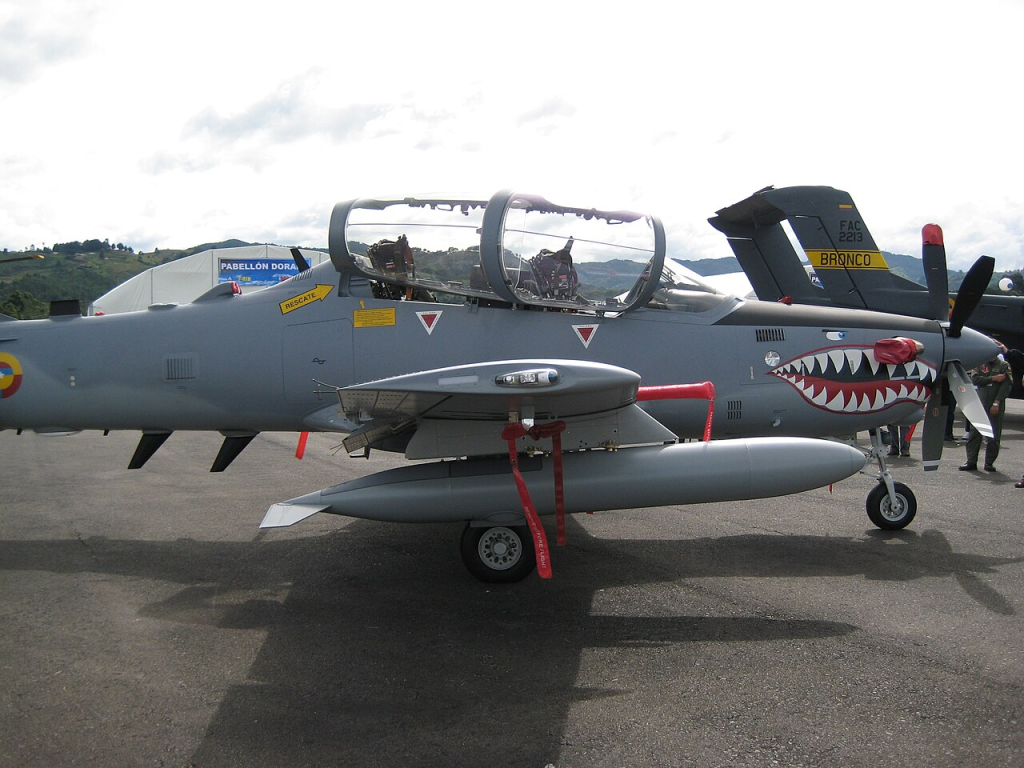
3. Turboprop Advantages in Drone Interception
The Super Tucano is very well adapted for engagements against low, slow-flying drones – a type of target the fast jets often either overshoot or else risk safety using guns at low closure rates – due to its relatively low speed and high endurance. A turboprop has the ability to loiter and make tight maneuvers, all at a fraction of the cost per flight hour. This will allow for persistent patrols above defended areas, using fewer scramblings of high-end fighters against each and every incursion drone. It’s such qualities which will become decisive in conflicts in which attritable drones appear in volume.
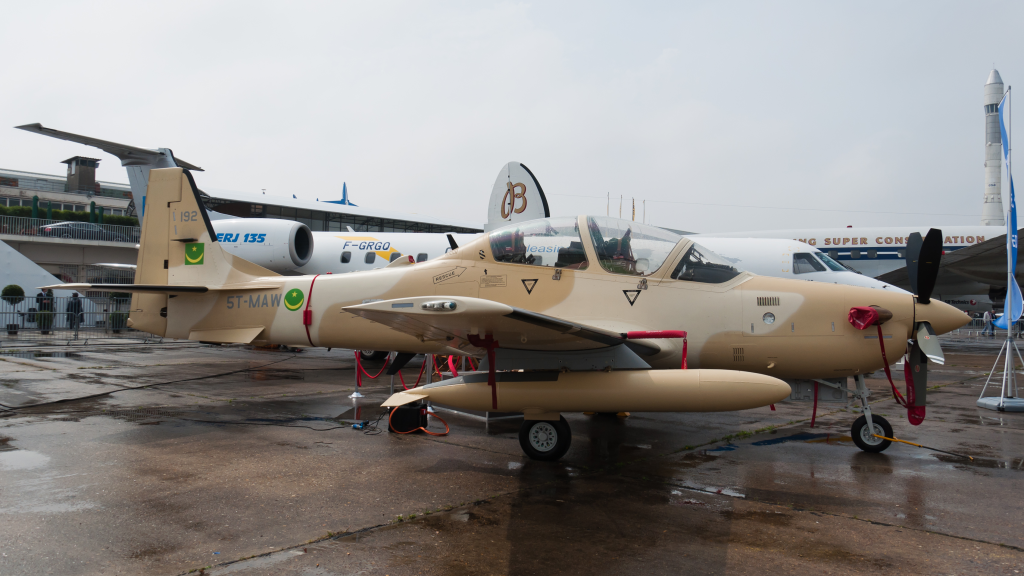
4. Lessons from Ukraine’s Improvised Drone Hunters
Ukrainian air defenders showed that light, agile aircraft could be useful against drones – Crop dusters and trainers fitted with R-73 infrared missiles or armed with small arms brought down Orlan and Zala UAVs. Russia has responded similarly with basic piston aircraft. Such improvised solutions generally work but tend to lack integrated sensors and precision weapons. Embraer’s A-29 concept professionalises the approach: similar flight characteristics but with military-grade targeting and guided munitions.

5. Cost-Exchange and Magazine Depth Benefits
Generally speaking, in drone warfare, million-dollar interceptors compete against a few-thousand-dollar drones. As Lt. Gen. France identified, “We don’t have the magazine depth” to sustain that imbalance. APKWS II rockets come with low unit costs and are compatible with multi-round pods to directly offset this issue. Where platforms like the F-15E are able to carry upwards of 42 rockets, for example, A-29 capacity is far smaller. The principle remains the same, however: more shots per sortie, less strain on missile inventories, and better alignment of cost to target value.

6. Multi-Mission Flexibility
The employment of A-29s against drones does not preclude other missions of the aircraft. The A-29 is capable of carrying mixed ordnance loads from light attack to armed reconnaissance, interchanging missions in one sortie. Of particular note, this will be very useful in those austere environments where logistics could be constrained. Operating forward locations closer to the threat zones also reduces demand for tankers, freeing resources for other missions.
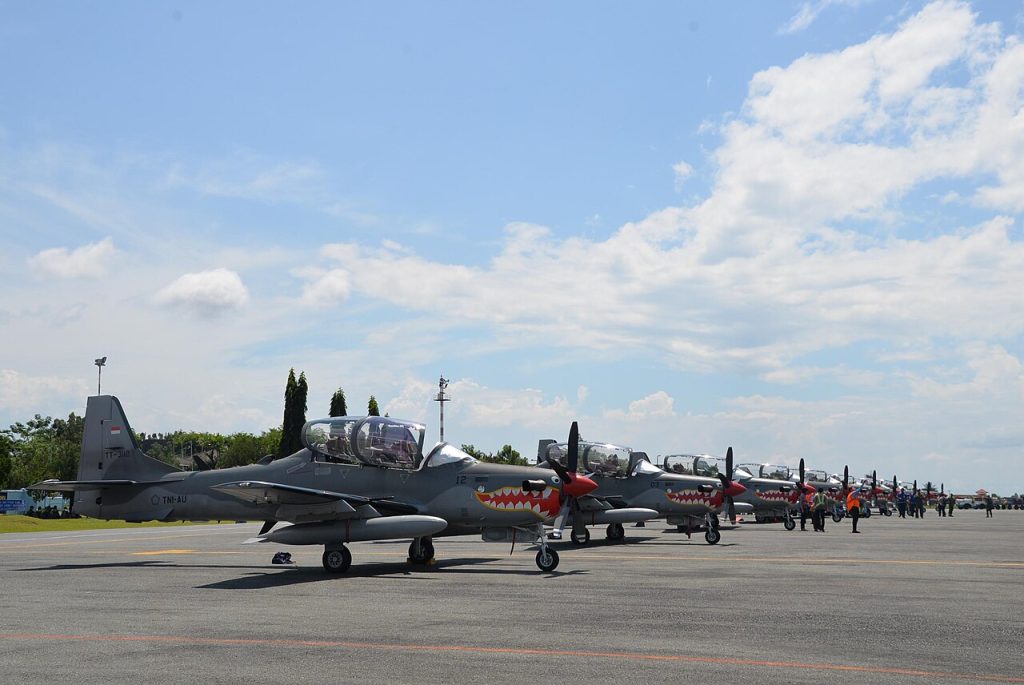
7. Challenges and Limitations of Integration
The A-29 does not have built-in radar; hence, the detection of targets over long distances is hardly possible. Crews will be dependent on external cueing by datalink or voice communications; slower response times than fast jets; swarms of drones may overwhelm the capacity of a single aircraft. Multiple Super Tucanos could, however, be deployed for the price of one fighter, hence allowing engagements in more sectors. Capable of loitering in specific zones, it makes them effective against smaller and localized threats.

8. AI and Networked Counter-UAS Systems
Emerging systems such as Lockheed Martin’s Sanctum, powered by AI, will continue to show how networked defenses can enhance aircraft-based C-UAS roles. Sanctum leverages learning algorithms to detect drones in clutter, recommends weapon-target pairings, and shares threat data across deployments. Integrating turboprops into such networks could provide richer sensor data and coordinated engagement plans that offset some of their detection limitations.
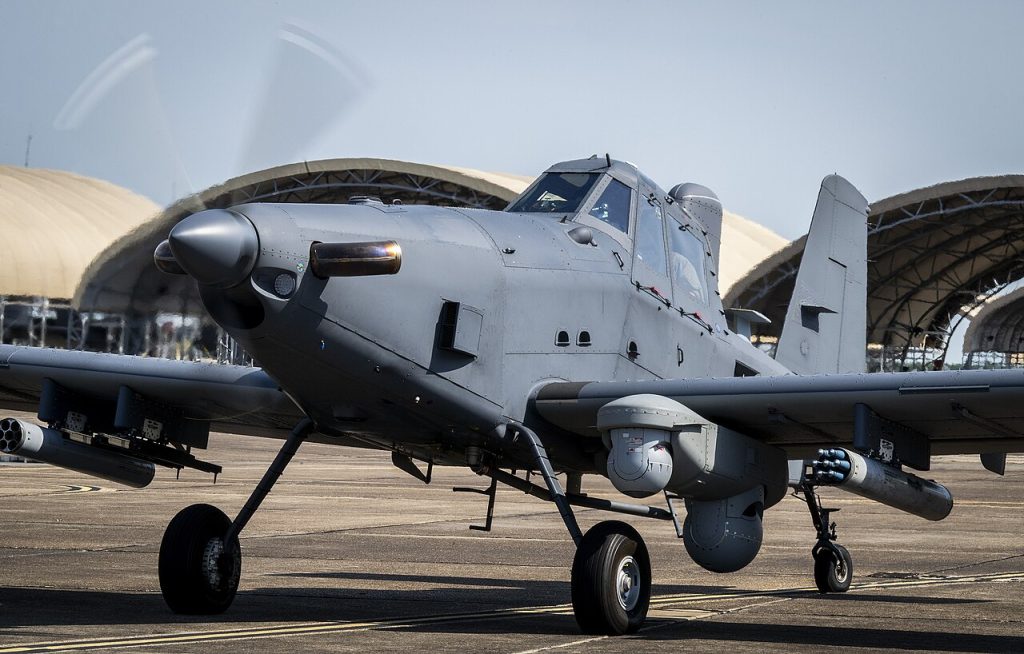
9. A Growing Global Trend
A similar role for the Super Tucano is not an isolated development. That Textron’s AT-6 Wolverine has been proposed for the same kind of patrols; the U.S. Air Force’s OA-1K Skyraider II concept separately targets unmanned adversaries. Eurofighter Typhoon operators are considering APKWS integration to counter drones without depleting missile stocks. With drone incursions now testing NATO airspace and overwhelming defenses in the Middle East, low-cost airborne interceptors are turning from novelties into a strategic necessity.
What’s most striking in this Embraer vision of the A-29 Super Tucano as dedicated drone hunter is a pragmatic thinking about air defense: take existing sensors, add precision rockets at a low cost, and operators can add a counter-UAS layer without sacrificing other mission sets or breaking budgets. In an era when adversaries exploit cost asymmetries with cheap, plentiful drones, the decisive edge may belong not to those who merely proliferate capability but to those who can innovate quickly and spend wisely. One clear message from the reinvention of the Super Tucano is that the future of air defense will be about adaptability and fiscal prudence just as much as speed and firepower.
